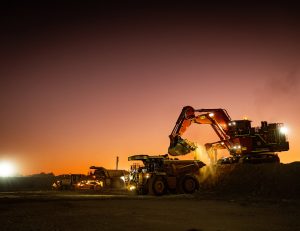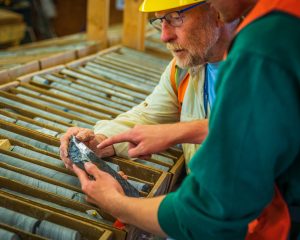After many years in the M&A doldrums, it is hard to keep up with all the corporate manoeuvring in the ASX-listed mining space.
The Gwalia mine near Leonora hasn’t been this popular in years, there is a lot of roaring around who else might have a crack at Liontown Resources, BHP has moved into the house of OZ Minerals, iron ore billionaire Andrew Forrest is moving further into nickel and Newcrest Mining has all but waved the white flag in favour of suitor Newmont Mining.
And if M&A is not distracting enough, Perth was taken over this week by Rio Tinto’s board and significant travelling entourage, in town to meet regulators and key stakeholders, hold board meetings, face media, complete the Australian leg of its dual-AGM and hold court in front of more than 500 of the Perth business and political community’s good and the great yesterday morning.
No wonder the release of the Diggers & Dealers Mining Forum 2023 presenter schedule on Thursday failed to push its way into the headlines.
Yet the program this year again provides an insight into the thinking of capital markets and where the next big returns might be found.
Diggers & Dealers is Australia’s largest and most important conference, pitting mining and exploration companies with the capital markets community. It draws more than 2500 industry players over a three-day period to Kalgoorlie-Boulder, Australia’s gold capital.
Diggers & Dealers is never without its critics, not least because of its location in Kalgoorlie-Boulder, though its longevity – this year will be the 32nd time delegates have turned up – gives it serious ASX street cred.
Granted, the program of presenters has to take its cue from companies wanting to present – and every year there are changes from the first cut of the program to when the first presenter takes the stage at the Goldfields Arts Centre on a Monday in early August.
So here are some thoughts about the first edition of the 2023 program that should give investors something to ponder this weekend.
The majors are out. At this stage, there are no presentation slots for BHP, Rio, South32, Roy Hill Holdings, Newcrest and Fortescue Metals Group. Granted, Rio and South32 have been irregular presenters of late and Newcrest only a part-engaged one.
On the cusp of being absorbed by Newmont, Newcrest had an easy decision to not nominate. But BHP used Diggers & Dealers to talk up its Nickel West business. Roy Hill, via its owner Gina Rinehart, used to be a long-standing and celebrated participant. And Fortescue – who knows.
To be fair, leading gold lights will again carry the Diggers & Dealers flame – none more so than Northern Star Resources (ASX: NST), owner of the Super Pit just a few stone throws from the Goldfields Arts Centre. Joining what will become the ASX’s top gold stock once Newcrest disappears are Fosterville mine owner Agnico Eagle Mines (TSX: AEM), St Ives owner and Gruyere operator Gold Fields (JSE: GFI) and Tropicana proprietor AngloGold Ashanti (JSE: ANG).
Roy Hill and Fortescue’s (current) no-shows mean there is no iron ore represented at Diggers & Dealers, for the first time in living memory. Notwithstanding that the iron ore majors are making a fortune from the steelmaking commodity, it is perhaps a sign that this is a big-company commodity and broader market expectations that the boom days are over. Maybe in a few years we will see a gaggle of magnetite-cum-green iron ore players bounce into Kalgoorlie-Boulder to present their wares.
Two stalwarts are missing. Sandfire Resources (ASX: SFR) is under new management and – at this stage – a no-show, which robs Diggers & Dealers of one of the ASX’s most prospective copper stocks now that OZ is gone. And Western Areas, a regular at Diggers & Dealers and the nickel queen since nickel king Jubilee Mines sold out to Glencore (nee Xstrata) for $3.1 billion in 2007, is now part of lithium-focused presenter IGO (ASX: IGO).
And Develop Global (ASX: DVP), the underground mining services company with zinc and copper mining aspirations that was launched with much fanfare at Diggers & Dealers just two years ago, is also not part of the line-up.
Also not part of the line-up is manganese, which brings Investor Insight to the commodities mix. This year’s program features:
- 29 gold stocks (same number as this time last year when the first version of the 2022 program was released);
- Eight nickel stocks (2022: nine)
- 10 lithium stocks (2022: four)
- Five copper stocks (2022: seven)
- Six rare earths stocks (2022: three); and
- Two uranium stocks (2022: two).
And of course a decent-sized list of “others” ranging from vanadium to lead to cobalt and mineral sands. Brace, of course, for change to the program between now and August – maybe a quality manganese stock can squeeze back in again.
Change, of course, is often driven by companies disappearing from the ASX (or other listed bourses) because they have been taken over or collapsed, or no longer want to present because of a change in fortunes or corporate set-up.
Takeover target Liontown is on the list of presenters but no certainty to still be ASX-listed by the time August rolls around. Mincor Resources (ASX: MCR) is unlikely to last the winter given that Forrest’s Wyloo Metals already controls 61.6 per cent of its stock and is trying to wrap up this takeover.
And then there are heaps of presenting companies that are leaving no stone unturned to informally position themselves as “inevitable” takeover targets – think Global Lithium Resources (ASX: GL1), Chalice Mining (ASX: CHN), De Grey Mining (ASX: DEG) and Bellevue Gold (ASX: BGL).
And if Newmont gets the keys to the Newcrest throne in time, what will it do with Newcrest’s 10.3 per cent stake in presenting company and perennial takeover target SolGold (LSE: SOLG)? And if non-presenter Silver Lake Resources (ASX: SLR) defies the odds and beats presenter Genesis Minerals (ASX: GMD) to St Barbara’s Gwalia prize, will that trigger a presenter swap-out come August?
Finally, the notable absence of ASX top-tier stocks means the market capitalisation of presenting companies this year is dipping into arguably unchartered territory – at least this century. Based on last night’s sharemarket close, the lowest-valued presenting company tops the scales at just $24 million.
Some would describe this as a lack of enthusiasm from big-caps to make the annual pilgrimage to Kalgoorlie.
Others would argue it is an encouraging sign that this annual showcase is taking a turn back to its roots of highlighting emerging companies that want to dig – or at least deal themselves into the action.



